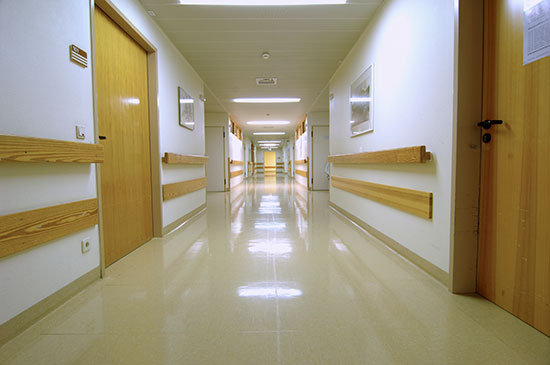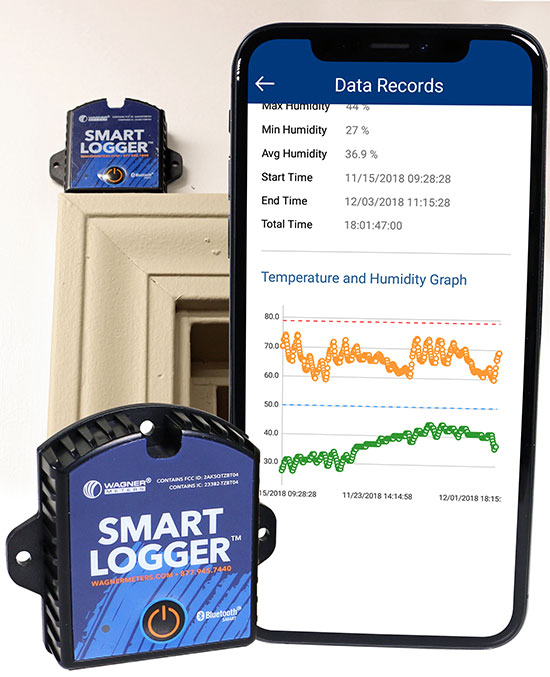Helpful Tips to Mitigate for Indoor Mold and Hospital-Acquired Infections
Previously published in Commercial Construction & Renovation magazine
 It is surprisingly common for hospital patients to catch a serious infection during their stay. Infections acquired in a hospital setting are most often due to bacteria and viruses, although fungi (or molds) are an important contributing factor too. [1, 3]
It is surprisingly common for hospital patients to catch a serious infection during their stay. Infections acquired in a hospital setting are most often due to bacteria and viruses, although fungi (or molds) are an important contributing factor too. [1, 3]
These infections sometimes become life-threatening. In fact, hospital-acquired infections (HAIs) have been reported as the fifth-leading cause of death in U.S. acute-care hospitals. Each year, as many as two million patients may suffer from an HAI, and of these, about 100,000 patients die. The annual cost to hospitals has been estimated at 28 to 45 billion dollars. [2]
Infections Due to Mold Are on the Rise
Fortunately, most of these infections can be prevented, and hospitals have been proactive in taking appropriate preventive measures. Nevertheless, HAIs related to fungi or mold remain on the rise. By far the most common causes of fungi or mold-related infections include Candida and Aspergillus. Together they cause approximately 100,000 invasive infections annually. [2]
Fungal or mold-related HAIs can be extremely resistant to treatment. A significant percentage end in death. Several factors are at play, such as compromised immune systems and the increasing numbers of patients on a long course of antibiotics, which can encourage the growth of Candida and other fungi or molds. [1]
 Studies report that better hospital hygiene (handwashing plus the thorough cleaning of surfaces) and the use of HEPA air filters can significantly reduce hospital-acquired fungal infections. Studies also point to improved nutrition for patients as an effective way to reduce the risk of infection. [1]
Studies report that better hospital hygiene (handwashing plus the thorough cleaning of surfaces) and the use of HEPA air filters can significantly reduce hospital-acquired fungal infections. Studies also point to improved nutrition for patients as an effective way to reduce the risk of infection. [1]
Fungi or molds, of course, are a natural part of the environment. They play a critically important ecological role in breaking down organic matter, such as fallen leaves and dead woody material. Mold spores, which are invisible to the naked eye, are everywhere. They float through the air and gather on all kinds of surfaces. But obviously, in an indoor setting, the occurrence of mold should be minimized as much as possible.
When indoor conditions are right, mold may begin to grow within 24 to 48 hours. [4] A moist, warm, high-humidity indoor environment is extremely conducive to the rapid growth of molds. Common sources of moisture may include undetected water leaks in buildings, high humidity levels in concrete floor slabs, or a damp, rainy climate.
Using Technology to Monitor Indoor Ambient Conditions
Given what we know about the conditions that can encourage mold growth, one valuable way to mitigate for molds and the risk of mold-related HAIs is to monitor regularly a building’s indoor ambient conditions. If the ambient relative humidity is found to be high, then corrective action should be taken to reduce moisture levels in the air.
With today’s advanced, new technologies, the monitoring of indoor ambient relative humidity and temperature has become extremely easy and affordable. For example, Wagner Meters, a leading provider of moisture measurement solutions, has recently introduced the Smart Logger™, a wireless, discrete tool for monitoring and recording temperature and relative humidity.
The Smart Logger is small, lightweight, and portable and offers extremely easy installation and set-up. It can be left on-site to collect ambient temperature and relative humidity information 24/7. No one needs to be there to collect this information because the device collects it automatically for the entire time one is away. The Smart Logger can capture and record up to 12,000 readings over a period of up to 300 days.
Once back on site, you simply pair the Smart Logger device with the Smart Logger app on your Bluetooth-enabled smartphone. This wirelessly transfers all the collected temperature and relative humidity data so that it is then literally at your fingertips for easy evaluation of indoor ambient conditions. The app can also be used to quickly send a summary report to others.
A Great Solution for Hospitals and Others
 These features certainly make the Smart Logger device and others like it a great solution for hospitals for ensuring consistent ambient temperature and relative humidity conditions and preventing or minimizing the growth of molds inside the building. Avoiding conditions that may increase mold growth could be rightfully considered an important matter for the well-being of every patient.
These features certainly make the Smart Logger device and others like it a great solution for hospitals for ensuring consistent ambient temperature and relative humidity conditions and preventing or minimizing the growth of molds inside the building. Avoiding conditions that may increase mold growth could be rightfully considered an important matter for the well-being of every patient.
In other settings, either commercial or residential, the reasons for using a data logging device like the Smart Logger may be quite different but no less important. General contractors and flooring professionals, for instance, seek data indicating that the building has reached “service conditions.” They want information about ambient temperature and relative humidity because it helps them make the right decision about when to install the finished floor in order to avoid a moisture-related flooring failure.
No matter what the application, the affordable price tag of a tool like the Wagner Smart Logger also means that it can be easily and economically installed in many locations throughout a single, large building or used in multiple buildings all at the same time. This certainly adds to its value as a monitoring and tracking device for indoor ambient conditions.
For more information about the Smart Logger or what you can do to effectively address moisture-related issues and concerns in hospitals and other commercial buildings, contact Wagner Meters at (800) 585-7614 or visit www.wagnermeters.com.
Sources
[1] Curtis, Luke. 2012. Rates of hospital acquired mold infection increasing. https://knowthecause.com/rates-of-hospital-acquired-mold-infections-increasing/
[2] Stone, Patricia W. 2010. Economic burden of health-associated infections: an American perspective. https://www.ncbi.nlm.nih.gov/pmc/articles/PMC2827870/
[3] Stein, Jeffrey and Peter G. Pappas. 2017. The emerging battle against fungal infections – What healthcare organizations can do to help. https://www.beckershospitalreview.com/quality/the-emerging-battle-against-fungal-infections-what-healthcare-organizations-can-do-to-help.html
[4] How fast can mold grow after water damage? https://www.damagecontrol-911.com/fast-mold-growth-water-damage/